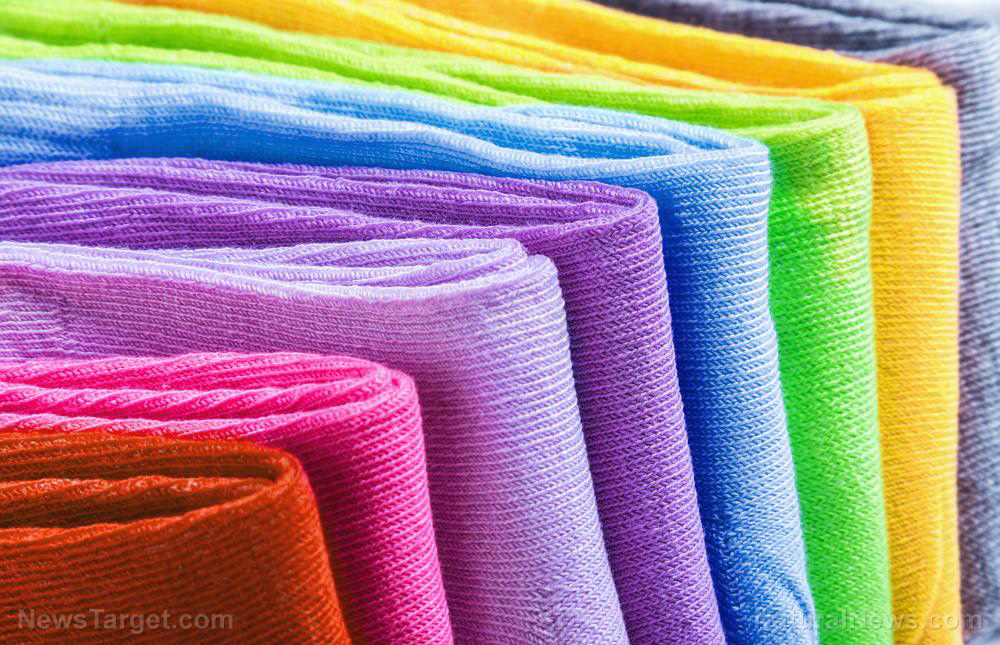An unlikely threat to oceans: Delicate wash cycles on washing machines release tons of microplastic fibers into waterways
09/13/2020 / By Virgilio Marin

The delicate wash cycle in washing machines may not be so delicate after all: Recent research found that delicate wash cycles shed more microfibers than ordinary spin cycles.
Researchers from Newcastle University partnered with Proctor & Gamble to test the effects of various variables such as temperature and water volume on microfiber shedding. They found that the greater the water volume, the more microfibers are shed. In a delicate wash cycle, more volumes of water are needed to adequately wash the clothes, upending current notions that place the blame on abrasive wash cycles.
The study suggests that it might be time to rethink the way people wash their delicates in order to minimize water pollution. Microfibers are major pollutants of the world’s oceans; they bypass wastewater filters due to their minute size and make their way into rivers and seas.
“By avoiding high water-volume-to-fabric washes such as the delicate cycles and ensuring full wash loads,” said co-author Max Kelly, “we can all do our bit to help reduce the amount of these synthetic fibres being released into the environment.”
The findings of the study were published in the journal Environmental Science and Technology.
Delicate wash cycle pollutes oceans
A report from the International Union for the Conservation of Nature found that synthetic clothes and textiles contribute to 35 percent of primary microplastics found in oceans. Primary microplastics are very small particles that are five millimeters or less in size. They are directly released into the environment.
Clothes shed plastic microfibers through washing. In fact, more than 4,500 fibers are plucked per gram of fabric in each wash, according to preliminary research by the Plastic Soup Foundation, an ocean conservation project in Amsterdam that’s funded by the European Union.
For the study, the researchers measured how many plastic microfibers are shed from polyester clothing for a range of cycles. They first used a tergotometer, a device composed of eight washing vessels that simulate domestic washing, testing whether changing the spin speed, temperature, time and water volume affects the number of plastic microfibers that get released. Then, the team tested polyester fabric on identical washing machines at a Procter & Gamble facility using a delicate wash cycle.
They found that 800,000 more plastic microfibers are plucked from clothing in a delicate wash cycle than a standard wash cycle. This is because a delicate wash cycle uses more water, the researchers found.
Previous research suggested that machine agitation is the most important factor affecting microfiber shedding. Machine agitation is composed of the spin speed, the number of changes in spin direction and the length of pauses during a wash cycle.
“The high volume of water used in a delicate cycle, which is supposed to protect sensitive clothing from damage, actually ‘plucks’ away more fibers from the material,” said Kelly.
Mitigating environmental pollution is everyone’s responsibility, added Kelly. Introducing small changes to one’s washing habits can make a big difference. (Related: Minimizing fibers used in synthetic fabrics can reduce plastic pollution and save marine life.)
How microfibers harm oceans
While microplastics are very small and lightweight, they cumulatively impact the environment in significant ways. They get scattered throughout the world’s waters, from tropical waters to polar ice, from freshwater to even the atmosphere. Previous research found that microfibers are responsible for 85 percent of shoreline pollution around the world.
Microfibers are also effective conveyors of other pollutants; they leach chemicals added to plastics or absorb pollutants in the water around them.
Due to their size, marine animals can mistake them for food. Authorities previously found microplastics in zooplankton, fish, mussels and whales. When ingested, chemicals in microplastics may affect the bodily functions of animals.
Microfibers also affect humans as they can pollute drinking water and the air, as well as find their way into our food.
These hazards highlight the importance of curbing water and air pollution and the need to enact policies regulating the use of microplastics.
Learn more about the hazards of plastic microfibers at OceanHealthNews.com.
Sources include:
Submit a correction >>
Tagged Under:
Ecology, environ, environment, marine life, microfibers, microplastics, ocean health, ocean life, Oceans, plastics, research, toxins, washing machine, washing machines
This article may contain statements that reflect the opinion of the author
RECENT NEWS & ARTICLES
COPYRIGHT © 2017 REAL SCIENCE NEWS





















